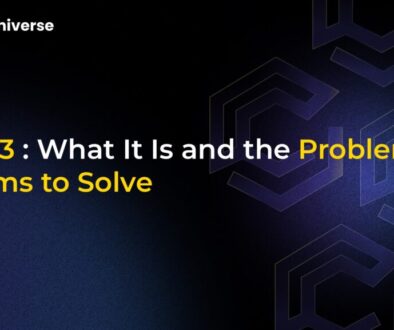Impending Threat: Bitcoin’s Vulnerability to Quantum Computing

In the rapidly evolving world of digital finance, Bitcoin stands as a titan, celebrated for its robust security and decentralized nature. Yet, a shadow looms on the horizon – the unprecedented power of quantum computing. What was once dismissed as a distant, theoretical concern is now prompting serious alarm among experts and influential figures in the crypto space.
This isn’t just about a potential upgrade in computing power; it’s about an existential threat that could fundamentally challenge Bitcoin’s cryptographic foundations. Imagine a scenario where the private keys securing your digital assets could be unraveled, leading to widespread market disruption and extreme price volatility. The urgency to address this issue is growing, with many believing that Bitcoin has a limited window to implement protective measures.
As tech giants like Google and Microsoft race towards quantum supremacy, the Bitcoin community is shifting from denial to a pressing need for preparedness. This article delves into the impending threat of quantum computing to Bitcoin and explores the proposed solutions aiming to safeguard its future.
Quantum Computing and Bitcoin’s Encryption: A Looming Challenge
At the heart of Bitcoin’s security lies elliptic curve cryptography (ECDSA). This sophisticated mathematical system is currently considered highly resistant to attacks from traditional computers. It’s the technology that ensures your Bitcoin transactions are secure and your private keys remain private, preventing unauthorized access to your funds.
However, the advent of quantum computers introduces a formidable adversary. These machines operate on the principles of quantum mechanics, allowing them to perform calculations far beyond the capabilities of even the most powerful supercomputers today. Specifically, a quantum algorithm known as Shor’s algorithm poses a direct threat to Bitcoin’s security model.
Shor’s algorithm can efficiently solve the elliptic curve discrete logarithm problem – the very mathematical puzzle that safeguards Bitcoin’s private keys. If a sufficiently powerful quantum computer were to execute Shor’s algorithm, it could potentially:
- Derive a wallet’s private key from its public key.
- Gain unauthorized control over Bitcoin wallets.
- Compromise the integrity of the entire Bitcoin blockchain.
The Quantum Timeline: How Soon Is “Soon”?
The precise timeline for when quantum computers will become powerful enough to execute these attacks remains a subject of debate among experts. Estimates vary:
- Some projections suggest this could happen within the next 5 to 7 years.
- Other analyses offer a more conservative outlook, placing the threat in the 2030s or even later.
Despite the uncertainty surrounding the exact date, the rapid and continuous advancements in quantum computing technology are undeniable. This necessitates a proactive approach rather than a reactive one, emphasizing the critical need for the Bitcoin community to prepare for this potential future.
Post-Quantum Cryptography Solutions: Securing Bitcoin’s Future
The good news is that the cryptographic community is not sitting idly by. To defend against the looming quantum threat, a new field of study has emerged: Post-Quantum Cryptography (PQC). PQC focuses on developing cryptographic algorithms designed to be secure against attacks from both classical and quantum computers.
Several promising PQC approaches are currently being explored, each with its unique strengths and characteristics:
- Hash-based Cryptography: These algorithms rely on the security of hash functions, which are generally considered robust against quantum attacks. They are relatively simple to implement but can have larger key sizes.
- Lattice-based Cryptography: Based on complex mathematical problems involving lattices, these algorithms offer strong security guarantees and good performance, making them a leading candidate for many PQC applications.
- Code-based Cryptography: These methods derive their security from error-correcting codes. While offering high security, they often come with larger key sizes and slower performance compared to other PQC schemes.
Challenges and Standardization Efforts
Implementing PQC solutions into existing systems like Bitcoin is not without its challenges. Key considerations include:
- Security: Ensuring the new algorithms are truly quantum-resistant and don’t introduce new vulnerabilities.
- Performance: The new algorithms must be efficient enough to integrate without significantly slowing down transaction processing or increasing network costs.
- Compatibility: Maintaining seamless operation with existing infrastructure and ensuring a smooth transition for users.
Recognizing the global importance of this transition, standardization efforts are well underway. The National Institute of Standards and Technology (NIST) in the United States has been at the forefront of this initiative. NIST has been evaluating and selecting a suite of PQC algorithms through a rigorous, multi-year process. Their aim is to establish reliable PQC standards that can be adopted worldwide, ensuring a unified and secure approach to future-proofing digital assets.
NIST has already finalized its initial set of encryption algorithms designed to withstand quantum cyberattacks, a significant step forward in the race to secure our digital future. These efforts aim to specify multiple algorithms for different applications, acknowledging that a one-size-fits-all solution may not be optimal.
The Path Forward: Preparedness Over Denial
The discussions among industry leaders highlight a crucial shift in mindset: from dismissing the quantum threat to embracing preparedness. The potential for quantum computers to unravel Bitcoin’s foundational security is no longer a distant sci-fi fantasy but a tangible risk that demands immediate attention and proactive measures.
The race towards quantum computing advancements by tech giants underscores the critical nature of this threat. Bitcoin, as a leading cryptocurrency, has a responsibility to its users and the broader financial ecosystem to address this vulnerability head-on. Implementing post-quantum cryptography is not merely a technical upgrade; it’s a strategic imperative to secure Bitcoin’s long-term viability and maintain its position as a cornerstone of the decentralized economy.
While the exact timeline remains uncertain, the window for action is open now. The Bitcoin community, developers, and miners must engage in collaborative efforts to research, test, and ultimately integrate quantum-resistant solutions. By proactively addressing this impending threat, Bitcoin can solidify its future, ensuring its resilience in an increasingly quantum-powered world.


